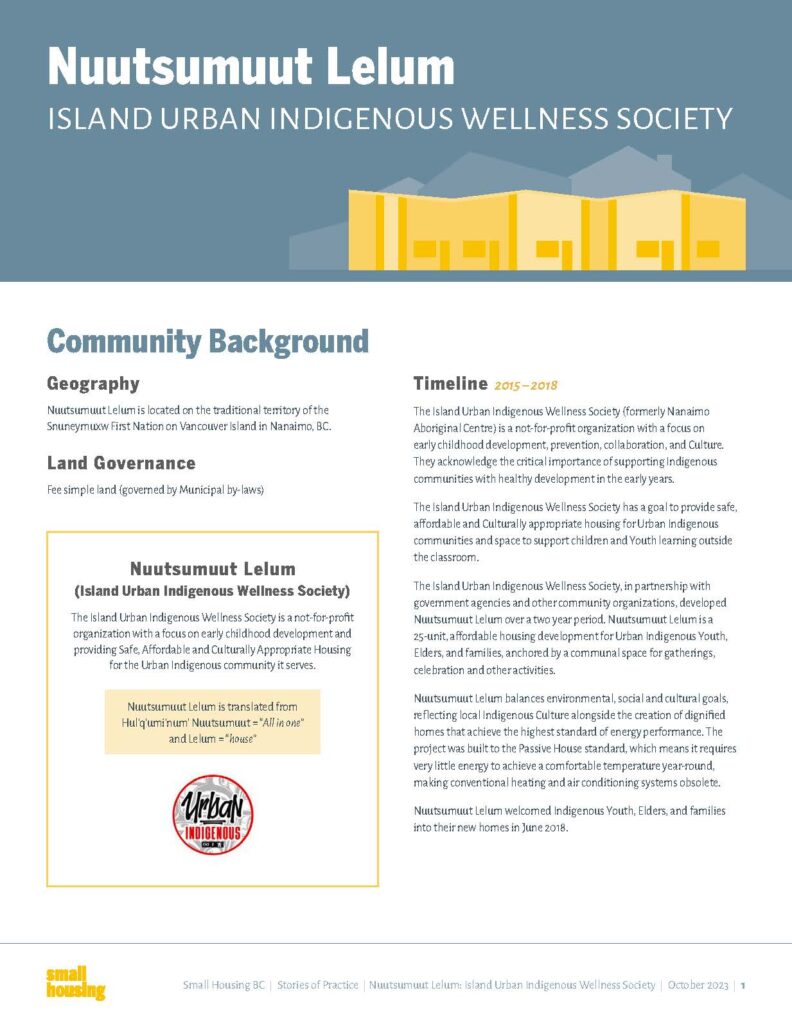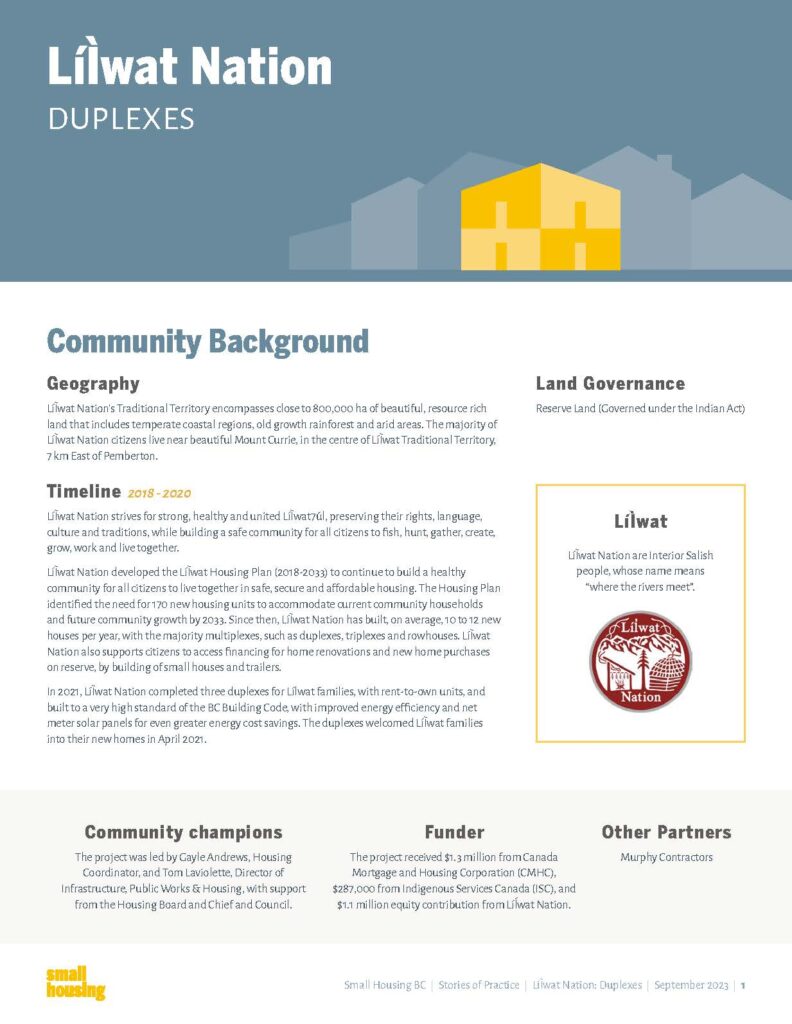
Key insights:
Nuutsumuut Lelum is located on the traditional territory of the Snuneymuxw First Nation on Vancouver Island in Nanaimo, BC.
The Island Urban Indigenous Wellness Society (formerly Nanaimo Aboriginal Centre) is a not-for-profit organization with a focus on early childhood development, prevention, collaboration, and Culture. They acknowledge the critical importance of supporting Indigenous communities with healthy development in the early years.
Led by the Island Urban Indigenous Wellness Society, Nuutsumuut Lelum is a 25-unit affordable housing project emerged from a two-year collaboration with government agencies and community organizations.
As this Small Housing Stories of Practice report outlines, beyond providing safe and culturally appropriate housing for Urban Indigenous Youth, Elders, and families, Nuutsumuut Lelum embodies a commitment to environmental, social, and cultural sustainability. Built to the rigorous Passive House standard, it harmonizes energy efficiency with Indigenous values, creating dignified homes where community members thrive.
Explore the transformative journey from concept to reality as Nuutsumuut Lelum continues to foster unity and celebration since its inauguration in June 2018.
